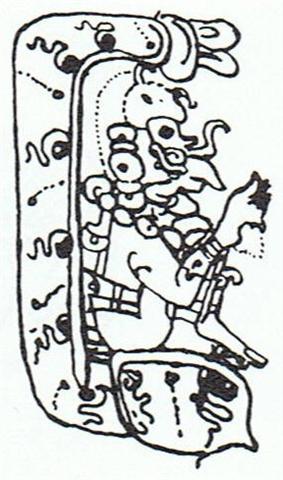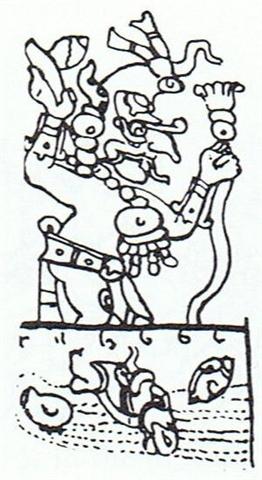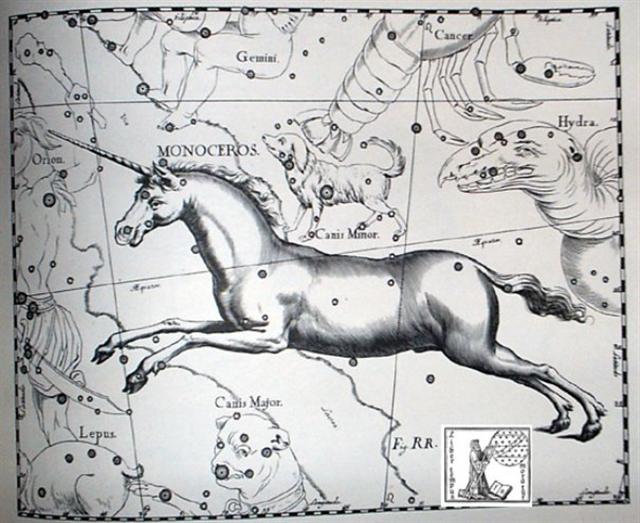The Romans counted (hia) with 'a month' from June 10 (161),
which reasonably should mean the time to day 191 (July 10):
|
Nov 25 (329) |
26 |
27 |
28 (332) |
29 |
30 |
 |
 |
 |
 |
 |
 |
|
Da1-1 |
Da1-2 |
Da1-3 |
Da1-4 |
Da1-5 |
Da1-6 |
|
ANTARES |
*250 |
ζ Ophiuchi
(*251.0) |
*252 |
ATRIA |
DENEBAKRAB |
|
*66 |
*67 |
ALDEBARAN |
*69 |
*70 |
TABIT |
|
Dec 6 (340) |
7 |
8 |
9 |
10 (344) |
|
OCT 3 |
4 |
5 |
6 |
7 (*200, 280) |
 |
 |
 |
 |
 |
|
Da1-12 |
Da1-13 |
Da1-14 |
Da1-15 → Mercury |
Da1-16 |
|
APRIL 3 |
4 |
5 |
6 |
7 (*17 = *81 - *64) |
|
June 6 |
7 (158) |
8 |
9 |
10 (161) |
|
... Midsummer is the flowering
season of the oak, which is the tree of endurance and triumph, and
like the ash is said to 'court the lightning flash'. Its roots are
believed to extend as deep underground as its branches rise in the
air - Virgil mentions this - which makes it emblematic of a god
whose law runs both in Heaven and in the Underworld ... The month,
which takes its name from Juppiter the oak-god, begins on June 10th
and ends of July 7th. Midway comes St. John's Day, June 24th, the
day on which the oak-king was sacrificially burned alive. The Celtic
year was divided into two halves with the second half beginning in
July, apparently after a seven-day wake, or funeral feast, in the
oak-king's honour ... |
|
Nakshatra stars ideally
visible at the time line of the Full Moon: |
|
*260 |
ALRISHA |
*262 |
*263 |
*264 |
|
Derived heliacal stars
located half a year earlier: |
|
*77 |
ĸ Leporis (*78.0) +
RIGEL + CAPELLA (*78.4)
THUBAN
|
λ Aurigae (*79.0)
ARCTURUS |
ELNATH |
NIHAL |

 |
 |
 |
|
Da3-1 (37 →
102 - 65) |
Da3-2 (183 -
290 / 2) |
Da3-3 (39) |
|
July 1
(2 * 91) |
July 2 (183
= 366 / 2) |
July 3 (39 +
145, *104) |
|
Nakshatra stars ideally
visible at the time line of the Full Moon in early July: |
|
SHELIAK (β
Lyrae)
ATLAS
Dec 31 (*285, 365)
→
OCT 28 (365 - 64 = 301) |
AIN AL RAMI
(ν Sagittarii)
Jan 1 (*286, 366)
→
OCT
29 ('222 = *286 - *64) |
SULAPHAT (γ
Lyrae, *287.4)
Jan 2
(*287)
→ OCT
30 (303, *223) |
|
Heliacal stars
half a year away: |
|
ψ7 Aurigae
(*102.4) |
ALHENA (γ Gemini) |
ADARA = ε
Canis Majoris |
|
→ APRIL 28
(118 → 4 * 29½) |
→ APRIL 29 (*103 - *64 = *39) |
→ APRIL 30
(120) |
 |
 |
 |
 |
|
Da3-4 (40) |
Da3-5 |
Da3-6 |
Da3-7 |
|
July 4 (185) |
July 5 |
July 6 |
July 7 (188) |
|
NUNKI (σ
Sagittarii, *288.4)
Jan 3 (368)
OCT 31
(304) |
τ Sagittarii
(*289.4) Jan
4
NOV 1
(*225) |
AL BALDAH +
ALPHEKKA MERIDIANA
Jan 5 (370)
NOV 2 |
ALADFAR
Jan 6
NOV 3 (*227) |
|
ω Gemini
(*105.4) |
*106 |
WEZEN |
*108 |
 |
 |
 |
|
Da3-8 |
Da3-9 (45) |
Da3-10 (191
- 290 / 2) |
|
July 8 |
July 9 (190) |
July 10 (91
+ 100) |
|
*292
Jan 7
(228 + 12 * 12 = 372)
NOV 4 (*228) |
ALRAMI (The
Archer, α Sagittarii)
Jan 8 (*229
+ *64 = *293)
NOV 5 (*229) |
DENEB OKAB
(*294.0)
Jan 9 (374,
*294)
NOV 6
(*230) |
|
WASAT |
*110 |
PROPUS (*111.4) |

And possibly we should count with 6 'sleeping mats' before
reaching Da3-14 (→ π).

 |
 |
 |
 |
 |
|
Da3-11 |
Da3-12 (48) |
Da3-13 (7 *
7) |
Da3-14 |
Da3-15 → π +
1 |
|
July 11 (192) |
July 12 |
July 13 |
14 (50 +
145) |
15 (196) |
|
*295
Jan 10
(375)
NOV 7
(*231) |
*296
Jan 11
NOV 8 |
SHAM
Jan 12
NOV 9 |
*298
Jan 13
NOV 10 |
TARAZED
Jan 14
(379, *299)
NOV 11
(*235) |
ANTARES |
CASTOR |
PROCYON |
α MONOCER.
(*115.4) |
POLLUX |
However, we should remember that Pythagoras slept 27
'hallowed days' in a cave and that the mortally wounded Kuukuu
also was buried (tanu) for 27 days down in a cave [E:27-E:30].
With his 6 stone heap (not moving, 'sleeping') companions outside (→
Tau-ono, '6 stones', the Pleiades).
... As has already been mentioned, the
Delphians worshipped Dionysus once a year as the new-born child,
Liknites,
'the Child in the Harvest Basket', which was a shovel-shaped
basket of rush and osier used as a harvest basket, a cradle, a
manger, and a winnowing-fan for tossing the grain up into the
air against the wind, to separate it from the chaff. The worship
of the Divine Child was established in Minoan Crete, its most
famous early home in Europe. In 1903, on the site of the temple
of Dictaean Zeues - the Zeus who was yearly born in Rhea's cave
at Dicte near Cnossos, where Pythagoras spent 'thrice nine
hallowed days' of his initiation - was found a Greek hymn which
seems to preserve the original Minoan formula in which the
gypsum-powdered, sword-dancing Curetes, or tutors, saluted the
Child at his birthday feast. In it he is hailed as 'the Cronian
one' who comes yearly to Dicte mounted on a sow and escorted by
a spirit-throng, and begged for peace and plenty as a reward for
their joyful leaps ...
... As soon as he had asked, 'Where are you?' the voices [te
reo] of the stone heaps [te Pipi horeko] replied,
'Here we are!' All (the youths) said [he ki anake],
'Hey you! That was well done!' He (i.e., Ira) said, 'Let's go!
We shall go to Papa O Pea'. They all got up [he ea] and
moved on. On the twentieth day of the month of August ('Hora
Iti') they went to Papa O Pea ...
... The Mahabharata insists on six as the number
of the Pleiades as well as of the mothers of Skanda and
gives a very broad and wild description of the birth and the
installation of Kartikeya 'by the assembled gods ... as
their generalissimo', which is shattering, somehow, driving home
how little one understands as yet. The least which can be said,
assuredly: Mars was 'installed' during a more or less close
conjunction of all planets; in Mbh. 9.45 (p. 133) it is stressed
that the powerful gods assembled 'all poured water upon
Skanda, even as the gods had poured water on the head of
Varuna, the lord of waters, for investing him with
dominion'. And this 'investiture' took place at the beginning of
the Krita Yuga, the Golden Age ...

In an agricultural society it was a matter of course to water as
soon as the germ of a new generation had been put down into the
soil of Mother Earth. Thus, in the Raingod series the location down in
the earth was followed by a place with much water.

The Rainy Hyades followed after the Pleiades sisters.
I guess the creator of the D text might have counted *27 right
ascension days from nakshatra Nash (*273) to *300 (Altair) at
the first glyph in line Da4:
 |
 |
 |
 |
 |
*22 |
|
Da2-1 (21) |
Da2-2 |
Da2-3 |
Da2-4 |
Da2-5 |
|
June 15 |
16 |
17 (168) |
18 |
19 |
|
Nakshatra stars ideally
visible at the time line of the Full Moon in June: |
|
MULIPHEN (*269.0) |
GRUMIUM |
RUKBALGETHI GENUBI |
ζ Serpentis (*272.4)
|
NASH (*273) |
|
Derived heliacal stars
located half a year earlier: |
|
SAIPH (κ Orionis) |
WEZN (β Columbae) |
BETELGEUZE (*88) |
MENKALINAN |
μ + χ Orionis (*90) |
And by counting 27 right ascension days from the Moist One
(Betelgeuze, *88) we will reach to Da3-14 and July 14 (*115
→ Mercury):

 |
 |
 |
 |
 |
 |
|
Da3-11 |
Da3-12 (48) |
Da3-13 (7 *
7) |
Da3-14 (23 +
27) |
Da3-15 → π +
1 |
Da4-1 |
|
July 11 (192) |
July 12 |
July 13 |
14 (50 +
145) |
15 (196) |
16 |
|
*295
Jan 10
(375)
NOV 7
(*231) |
*296
Jan 11
NOV 8 |
SHAM
Jan 12
NOV 9 |
*298
Jan 13
NOV 10 |
TARAZED
Jan 14
(379, *299)
NOV 11
(*235) |
ALTAIR
Jan 15
NOV 12
(*236) |
ANTARES |
CASTOR |
PROCYON |
α MONOCER.
(*115.4) |
POLLUX |
AZMIDISKE
= ξ
Puppis (*117.4) |
Mercury →
He Toa Marikuru →
Betelgeuze.

















